Kardinal & König
Game preparation
With /join can enter 3-5 players into the game. With /start the game begins. Alternatively, you can use the game management use.
The game
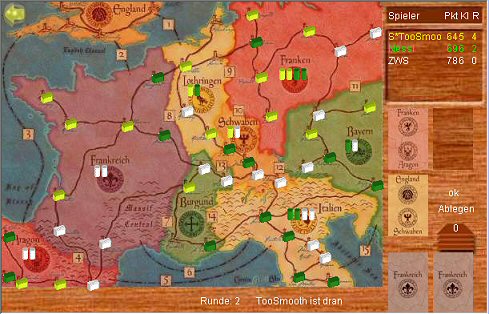
Each player must try to reach as many points as possible in the two reviews by monasteries, councils and convent chains. It is necessary to put its stones skillfully.
The field

The current round and phase will always be displayed at the lower edge of the picture.
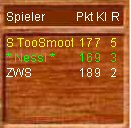
At the top right there is the player ad. The number of his points (Pkt) and the number of monasteries (Kl) and councils (R) still on hand are displayed behind each player.
The active player is marked with an * by its name; the starter carries his "S" in front of his name.
Below the player display, the three own hand cards, the draw-down stack and the two open draw-up cards are displayed.
Game sequence
Playing cards
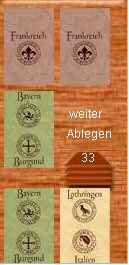
You select 1-3 of your handcards and click "OK". The "OK" then turns into a "Next" if a regular train is possible with the selected cards. Otherwise it is necessary and you must change the card selection so that a train is possible.
You can also not lay cards and only discard them and redraw them. To do this, click on the maps you want to discard and then click on "Delete".

The selected maps are displayed for all visible at the lower edge of the picture.
The active player now puts its stones on the schedule according to the betting rules (see below).
The card hand is then refilled to three cards. To do this, either click cards of the open lining or click on the redrawing stack. You can also combine both.
Set stones
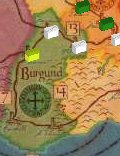
More monasteries are placed in the individual countries on the city fields. The following shall apply:
- it may only be placed in one country per train
- a maximum of two stones may be used per train
- in a unoccupied Country a Convent set
- two identical cards can be used as jokers for any country
You therefore play 1-3 cards for the corresponding country beforehand and then put the monasteries on the desired fields. It is possible to determine the country itself in the provincial maps (except France), but only one of the two must be set.
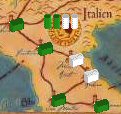
Räte can be used alone or together with a monastery. Räte are always placed on the round coats of arms of a country. In a country, no more councils are allowed than the player with most monasteries has monasteries there.
In the example, there are two white and four green monasteries in Italy. So a maximum of four councils can be set there.
Values
There are two scores in the game that are triggered when the draw-down stack is used up.
Only monasteries are evaluated in the first evaluation. There each country is charged individually. With most monasteries, the player gets as many points as the total monasteries in the country. The player with the second most cashier gets as much points as the first one has cashier there, etc. At the same time, all players get these points.
In the second evaluation, the monasteries are evaluated analogously. However, there are also valued convent chains and councils.
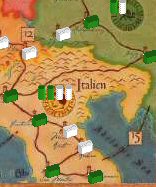
Monastery chains are monasteries, consecutive by roads uninterrupted. The connection can also exist across national borders. Such a chain must consist of at least four monasteries and counts one point per monastery.
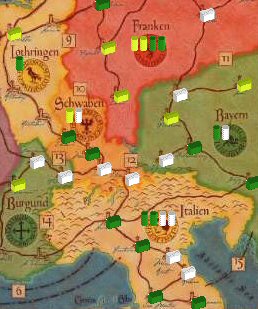
Councils only receive points for alliances with neighbouring countries. All countries connected by a number in a brown square are adjacent.
For this purpose, the countries do not necessarily have to be directly adjacent to each other (cf.: Aragon/Italy or England/Lothringen). Conversely, a common border is not necessarily also nanchbarity at the same time. So Schwaben has neighborhood with Franken, Burgundy and Bavaria, but not with Italy and Lorraine, despite common border.
In order to determine the council points, each country with its alliance partners is considered. Only those who have left the councils in both neighbouring countries and who have the majority of the councils there (equilibrium = majority) get points. The number of points is the sum of all councils in the two countries.
For example, Bavaria/Franken: only green dots could be found here because white and yellow are represented only in one of the two countries. Green has the majority in both countries, so 4 (Franken) + 2 (Bayern) points.
For example, Bavaria/Schwaben: here only white points get, because green and yellow are represented only in one of the two countries. So white gets 2 + 2 points.
Example Bavaria/Italy: White and Green share the majority, so both get 6 points.
Playing
The game ends after the second score, so after the draw-down stack has been played a second time.
Material
Each player has 20 monasteries and 8 councils available.

